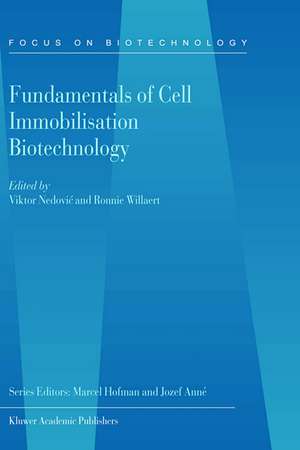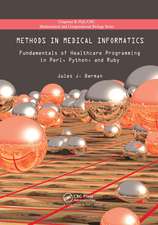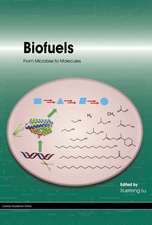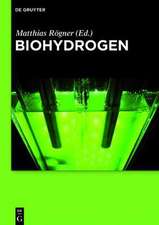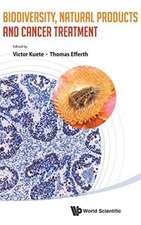Fundamentals of Cell Immobilisation Biotechnology: Focus on Biotechnology, cartea 8A
Editat de Viktor Nedovic, Ronnie Willaerten Limba Engleză Hardback – 30 apr 2004
The first volume, Fundamentals of Cell Immobilisation Biotechnology, comprises 26 chapters arranged into four parts:
- Materials for cell immobilisation/encapsulation,
- Methods and technologies for cell immobilisation/encapsulation,
- Carrier characterisation and bioreactor design, and
- Physiology of immobilised cells: techniques and mathematical modelling.
| Toate formatele și edițiile | Preț | Express |
|---|---|---|
| Paperback (1) | 1229.10 lei 6-8 săpt. | |
| SPRINGER NETHERLANDS – 4 dec 2010 | 1229.10 lei 6-8 săpt. | |
| Hardback (1) | 1242.21 lei 6-8 săpt. | |
| SPRINGER NETHERLANDS – 30 apr 2004 | 1242.21 lei 6-8 săpt. |
Preț: 1242.21 lei
Preț vechi: 1514.89 lei
-18% Nou
Puncte Express: 1863
Preț estimativ în valută:
237.73€ • 247.27$ • 196.26£
237.73€ • 247.27$ • 196.26£
Carte tipărită la comandă
Livrare economică 12-26 aprilie
Preluare comenzi: 021 569.72.76
Specificații
ISBN-13: 9781402018879
ISBN-10: 1402018878
Pagini: 564
Ilustrații: VI, 555 p.
Dimensiuni: 156 x 234 x 36 mm
Greutate: 1.15 kg
Ediția:2004
Editura: SPRINGER NETHERLANDS
Colecția Springer
Seria Focus on Biotechnology
Locul publicării:Dordrecht, Netherlands
ISBN-10: 1402018878
Pagini: 564
Ilustrații: VI, 555 p.
Dimensiuni: 156 x 234 x 36 mm
Greutate: 1.15 kg
Ediția:2004
Editura: SPRINGER NETHERLANDS
Colecția Springer
Seria Focus on Biotechnology
Locul publicării:Dordrecht, Netherlands
Public țintă
ResearchCuprins
1 Materials for Cell Immobilisation/Encapsulation.- Biomaterials for cell immobilization: A look at carrier design.- Alginate as a carrier for cell immobilisation.- Entrapment in LentiKats®: Encapsulation of various biocatalysts — bacteria, fungi, yeast or enzymes into polyvinyl alcohol based hydrogel particles.- Starches as encapsulation materials.- Proteins: versatile materials for encapsulation.- Polyelectrolyte complexes for microcapsule formation.- Pre-formed carriers for cell immobilisation.- Microcarriers for animal cell culture.- 2 Methods and Technologies for Cell Immobilisation/Encapsulation.- Microcapsule formulation and formation.- Liquid core caspules for applications in biotechnology.- Direct compression — novel method for encapsulation of probiotic cells.- Cell immobilisation in pre-formed porous matrices.- Whole cell immobilization in chopped hollow fibres.- Use of vibration technology for jet break-up for encapsulation of cells and liquids in monodisperse microcapsules.- Immobilization of cells and enzymes using electrostatic droplet generation.- The JetCutter technology.- Industrial scale encapsulation of cells using emulsification/dispersion technologies.- Atomisation techniques for immobilisation of cells in micro gel beads.- Spray coating and drying processes.- 3 Carrier Characterisation and Bioreactor Design.- Diffusive mass transfer in immobilised cell systems.- Characterization of microcapsules.- Immobilised cell bioreactors.- 4 Physiology of Immobilised Cells: Experimental Characterisation and Mathematical Modelling.- Applications of NMR spectroscopy and imaging to the study of immobilised cell physiology.- Physiology of immobilised microbial cells.- Modelling immobilised-cell processes: Application to integrated nitrogen removal withco-immobilised microorganisms.- Biofilm modelling.
Recenzii
From the reviews:
"Many volumes have been produced describing what can be done using immobilised cells, but there are fewer that bring together information on the various fundamental aspects of cell immobilisation. This book fills that need more than adequately, providing information both for experts and for newcomers to the field, and should be available in the library of any institution involved in biotechnology. … The book is pleasingly produced and the … chapters are easy to read without in any way trivialising their subjects." (Chris Bucke, Journal of Chemical Technology and Biotechnology, Issue 81, 2006)
"Many volumes have been produced describing what can be done using immobilised cells, but there are fewer that bring together information on the various fundamental aspects of cell immobilisation. This book fills that need more than adequately, providing information both for experts and for newcomers to the field, and should be available in the library of any institution involved in biotechnology. … The book is pleasingly produced and the … chapters are easy to read without in any way trivialising their subjects." (Chris Bucke, Journal of Chemical Technology and Biotechnology, Issue 81, 2006)
Caracteristici
Essential resource for the academic and industrial communities involved in the study of cell immobilisation biotechnology
